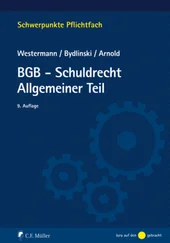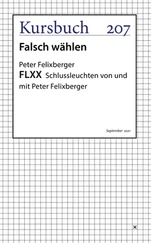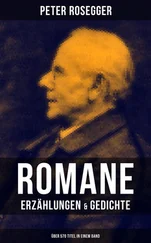Ross said, “I totally agree with your choice of words, Doctor Weston. We could have an Armageddon. And in a matter of weeks, maybe days. The evidence Doctor Holleran found in that fissure in Kentucky reads like a damn road map. Even a nonexpert like me can understand what all those cracks mean.”
“I’m not sure that a nuclear detonation wouldn’t violate the test ban treaty,” said Margaret Greenland.
“This wouldn’t be a test,” Ross snapped. “This will be for real. An attempt to avert a national calamity. I’ll personally call the Russian ambassador. Talk it over with him. Tell him what we’re up against.”
Ross wanted data run on where the shot should be made and its likely energy discharge. He wanted the answers—or best guesses—by tomorrow at the latest.
“That could be a problem,” Thompson said. “My concern is the time it’ll take to run the computations. Our computers are maxed out right now.”
“Tell me what you need,” Ross said.
Thompson didn’t hesitate. “Two Sun Sparc 10s. And enough disk storage space to handle two or three G-bytes. The programming codes we use are real space-eaters. Just to run good P- and S-wave velocities, you’re talking roughly sixteen thousand lines of computer coding.”
The president turned to Draper. “See that he gets whatever he needs. I want that equipment loaded on Air Force One within an hour.”
Booker had been fiddling with a pocket calculator, working on some rough critical mass projections.
“Where would you get the nuclear device you need?” Ross asked.
“The Pantex plant, Mister President.”
Ross was aware of the Department of Energy facility in east Texas. The huge complex where thousands of America’s nuclear weapons were kept in cold storage was just outside Amarillo.
“You’d use one of our stockpiled warheads?”
Booker nodded. “Depending on the requirements, I might customize one.” Fusion or fission. He wasn’t sure. As he worked out the pros and cons of each, he thought they might go either way. Fission had the advantage of being a cleaner bomb, but not as powerful as a thermonuclear fusion device. Depending on the design, however, a fission warhead could generate nearly as many kilotons as a thermo. He’d designed one himself back in the early 1960s, a fission bomb that produced a 500-kiloton yield without using the customary fusion boost of injecting heavy hydrogen into the core.
“I want you to go to Pantex and get what you need,” Ross said. “Meg, make sure he gets the necessary clearances. The highest priority. I’ll make the calls myself if necessary.”
“It might be a help to have a seismologist go with me,” Booker said. “I’ll need some advice.”
Draper looked at Atkins. “‘John, are you up for a trip to Texas?” he asked.
“Sure, I’ve always wanted to see Amarillo,” Atkins said. His smile belied his fear. He knew that he was in this up to his neck. Once they got started, there’d be no turning back. The clock was running. He instinctively realized he needed to commit himself totally. He glanced at Holleran and understood she felt exactly as he did. He could read it in her eyes. He experienced another strong twinge of excitement, a strange mingling of anxiety and elation. They were about to embark on something that had never been tried before. He wanted it to work, knew that it had to work.
Walt Jacobs had been conspicuously silent. Atkins felt his friend’s eyes boring right through him.
Ross asked for his opinion. Jacobs shifted in his seat and glanced at some notes he’d scribbled. He spoke with a force that startled Atkins. “Mister President, I think we’d make a tragic mistake if we detonated a nuclear bomb anywhere near the fault. Right now, we have a chance, a slight one, but a chance that the New Madrid system won’t fire, won’t produce another series of earthquakes. I admit that Doctor Holleran’s data scares me stiff. But if we try to set off a controlled quake on that fault system, we might get something that can’t even be described. The Reelfoot Rift, which contains much of the New Madrid Seismic Zone, is at the middle of the North American plate. It’s a weak spot deep in the earth, a giant scar in the rock at the precise place where 400 million years ago the continent tried to split apart. I worry that we’d be driving a wedge deep into a place of critical weakness.”
“Kind of like using a peg to split a log,” the president said.
Jacobs nodded. “Exactly, Mister President. What if we split the plate? Make it crack wide open. The deep fissures are already there. If a bomb somehow unlocked them, how do we know it wouldn’t restart a geological process that ground to a halt millions of years ago?”
“What could happen?” the president asked.
Jacobs didn’t answer. It was as if he was afraid to say more.
Atkins said, “It would mean you might have the Gulf of Mexico in Memphis.”
FRANKFORT, KENTUCKY
JANUARY 18
3:00 A.M.
A KENTUCKY STATE TROOPER KNOCKED ON Governor Tad Parker’s bedroom door, waited a respectful ten count, then knocked again. There was a deep cough, then the sound of footsteps. Parker opened the door.
The governor, hair tousled and wearing a baggy terry-cloth robe, rubbed his eyes. He’d just gone to sleep, thanks to two large glasses of red wine. He hadn’t had more than a few hours of sleep a night since the earthquake five days earlier.
“We’ve got a satellite transmission from Washington, sir,” the trooper said. “It’s Doctor Weston. He said it’s urgent.”
“I’ll be right there,” Parker said.
It was a short walk, just up a flight of steps, to the state disaster operations office.
The governor’s mansion, an early twentieth-century Beaux Arts building with a granite facade and beautiful English gardens, had been heavily damaged during the quake. Parker and his wife had moved across Capital Drive into the Executive Office Building, where they’d taken up makeshift quarters in the basement.
They were doing better than most residents of the Bluegrass State. At least they had portable toilets and bottled water. Critical shortages of drinking water were widespread. Telephone service was nonexistent. With virtually all of the relay towers knocked down or badly damaged, the cell phone system had also collapsed. For long distance communications, disaster officials continued to rely on shortwave, packet radio, and infrequent satellite transmissions.
Frankfort was roughly halfway between Louisville and Lexington, and all three cities were in bad shape. For that matter, so was virtually every other city, town, and village in Kentucky. Bowling Green was probably the hardest hit. Two hospitals had been destroyed. There’d been a bloody riot over food. Shooting had broken out along the Old Morgantown Road as people tried to force their way into a grocery store that had managed to reopen. The day before, a relief convoy was attacked on the Green River Parkway just outside the city limits. Four National Guard soldiers had been shot dead, the trucks looted by a large group of armed civilians.
Parker’s people still hadn’t been able to get him a detailed damage estimate. With the exception of limited shortwave transmissions, most towns were cut off from the outside. The earthquakes had shattered the interstates and local highways; bridges were down, over two hundred at last count. The rural folks were in the best shape; most of them had horses to ride and food to eat. They also had well water.
From the front door of the Executive Office Building, Parker could look south, toward shattered Interstate 64. Just beyond it, on a granite bluff, stood the tomb where Daniel Boone was buried. Parker appreciated the grim irony that Kentucky was just about as cut off and inaccessible as it had been when Boone made the first of his long hunts through the state more than 200 years earlier. The Indian name for the area was more haunting than ever—Dark and Bloody Ground.
Читать дальше












